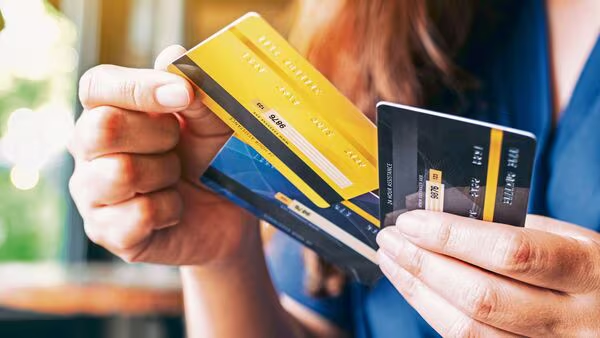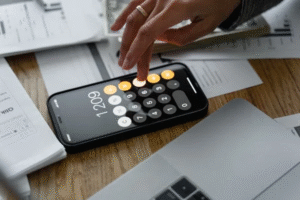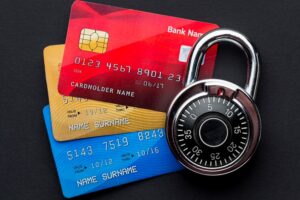The hidden mind tricks of credit cards: How banks shape your spending habits
Credit cards feel like magic—swipe, tap, or click, and it’s yours. No counting cash or worrying about an immediate bank hit. But this ease isn’t accidental. Banks design credit cards to subtly shape how you think about spending, using psychological tactics to encourage more use.
Recognizing these triggers helps you stay in control and avoid common pitfalls. Let’s explore how banks influence your spending and how you can outsmart their strategies.
The illusion of “free money”

One of the most powerful psychological tricks behind credit cards is the separation between the purchase and the actual payment. Unlike using cash or a debit card, where money is deducted instantly, credit cards delay the moment of financial pain.
This delay creates an illusion that spending isn’t as significant as it actually is, leading people to buy more than they would if they were paying in cash. Studies have repeatedly shown that people tend to spend more when using credit cards compared to cash.
A study conducted by MIT found that consumers were willing to pay significantly more for the same item when using a credit card rather than cash. This happens because physical money creates a tangible sense of loss—you literally feel the money leaving your hands.
In contrast, a credit card transaction feels almost abstract, as if the purchase isn’t “real” until the bill arrives weeks later. That’s why banks promote credit cards so aggressively. They understand that when spending feels effortless, you’re more likely to do it frequently, increasing their profits through transaction fees and interest payments.
The psychological impact of credit limits
Your credit limit isn’t just a number; it’s a psychological anchor. When banks approve a limit, they’re not just assessing your financial profile—they’re also subtly guiding your spending behavior. If your limit is high, you might feel comfortable making larger purchases, even if they aren’t necessary.
Banks often increase credit limits over time, making it easier to justify bigger expenses. This tactic, called “limit creep,” gives the illusion of greater financial flexibility, even if your actual financial situation hasn’t changed.
Many consumers take this as a sign that they can afford more, when in reality, it just increases the risk of debt accumulation. Additionally, having a high credit limit can make you feel wealthier than you actually are.
Even if you don’t plan on using your full limit, knowing you have access to a large amount of credit can subtly encourage spending beyond your means. This is particularly true for those who view their credit limit as an extension of their income rather than a temporary borrowing tool.
The dopamine effect of rewards
Credit card rewards aren’t just about savings—they tap into the brain’s reward system. Every time you earn cashback, miles, or points, your brain releases dopamine, the same feel-good chemical associated with pleasure, addiction, and motivation. This creates a cycle where spending feels like a game, making you want to use your card more often.
Banks strategically design these rewards to keep you engaged. Many cards offer sign-up bonuses or extra points on specific spending categories, encouraging you to use the card for purchases you might not have made otherwise. Some cards introduce limited-time promotions or tiered spending bonuses, which create a sense of urgency and exclusivity.
The psychological impact of these rewards can be powerful. For example, many people end up spending more just to reach a rewards threshold—whether it’s a minimum spend for a sign-up bonus or the next tier of points accumulation. This is exactly what banks want. The more you chase rewards, the more money you spend, and the more they profit from transaction fees and interest charges.
The minimum payment trap
One of the most dangerous psychological tactics in the credit card industry is the concept of minimum payments. By setting a low minimum, banks make it seem like repaying debt is manageable. But what they don’t highlight is how much interest accumulates if you only pay the minimum each month.
This strategy is designed to keep you in a cycle of debt. The longer you carry a balance, the more banks profit from interest charges. Many people fall into this trap, thinking they’re making progress when in reality, they’re barely covering the interest.
To put things into perspective, imagine you have a $3,000 balance on a credit card with a 20% interest rate. If you only pay the minimum each month, it could take you over a decade to pay off the balance—while paying thousands of dollars in interest.
This is why banks emphasize minimum payments rather than encouraging full balance payments. It’s in their best interest for you to stay in debt as long as possible.
The hidden power of transaction visibility
Have you ever noticed how easy it is to check your credit card balance compared to tracking cash expenses? This visibility might seem like a tool for better financial management, but it can also work against you. When banks provide real-time updates and spending breakdowns, it gives a sense of control, making people feel more comfortable spending more.
At the same time, digital transactions lack the emotional weight of handing over physical cash. This combination of visibility and detachment creates a paradox: you feel in control while actually spending more than intended.
Moreover, mobile banking apps and credit card notifications often highlight available credit rather than focusing on outstanding debt. This reinforces the idea that you have money to spend rather than reminding you of what you already owe.
How to outsmart the psychology of credit cards
While credit cards are designed to encourage spending, you can turn the tables and use them strategically. Here’s how:
- Treat your credit card like a debit card. Only charge what you can afford to pay in full each month.
- Set your own “credit limit.” Even if your bank offers a high limit, decide on a personal spending cap to avoid unnecessary debt.
- Use rewards wisely. Don’t let points tempt you into spending more. Focus on maximizing benefits for purchases you would have made anyway.
- Pay more than the minimum. Always aim to pay off your balance in full to avoid high-interest charges.
- Be mindful of psychological triggers. Recognize when spending feels too easy and take a step back before making impulsive purchases.
Final thoughts
Credit cards can be powerful financial tools when used responsibly, but it’s important to recognize the psychological tricks banks use to influence your behavior. From the illusion of “free money” to the dopamine-fueled rewards system, every aspect of credit card design is meant to encourage spending.
By understanding these strategies, you can take back control of your financial habits, avoid unnecessary debt, and make credit cards work for you—not the other way around.
I'm a student who lives in Rio Grande do Sul, who loves to read and takes advantage of her spare time to catch up on her reading and watch my K-dramas.





